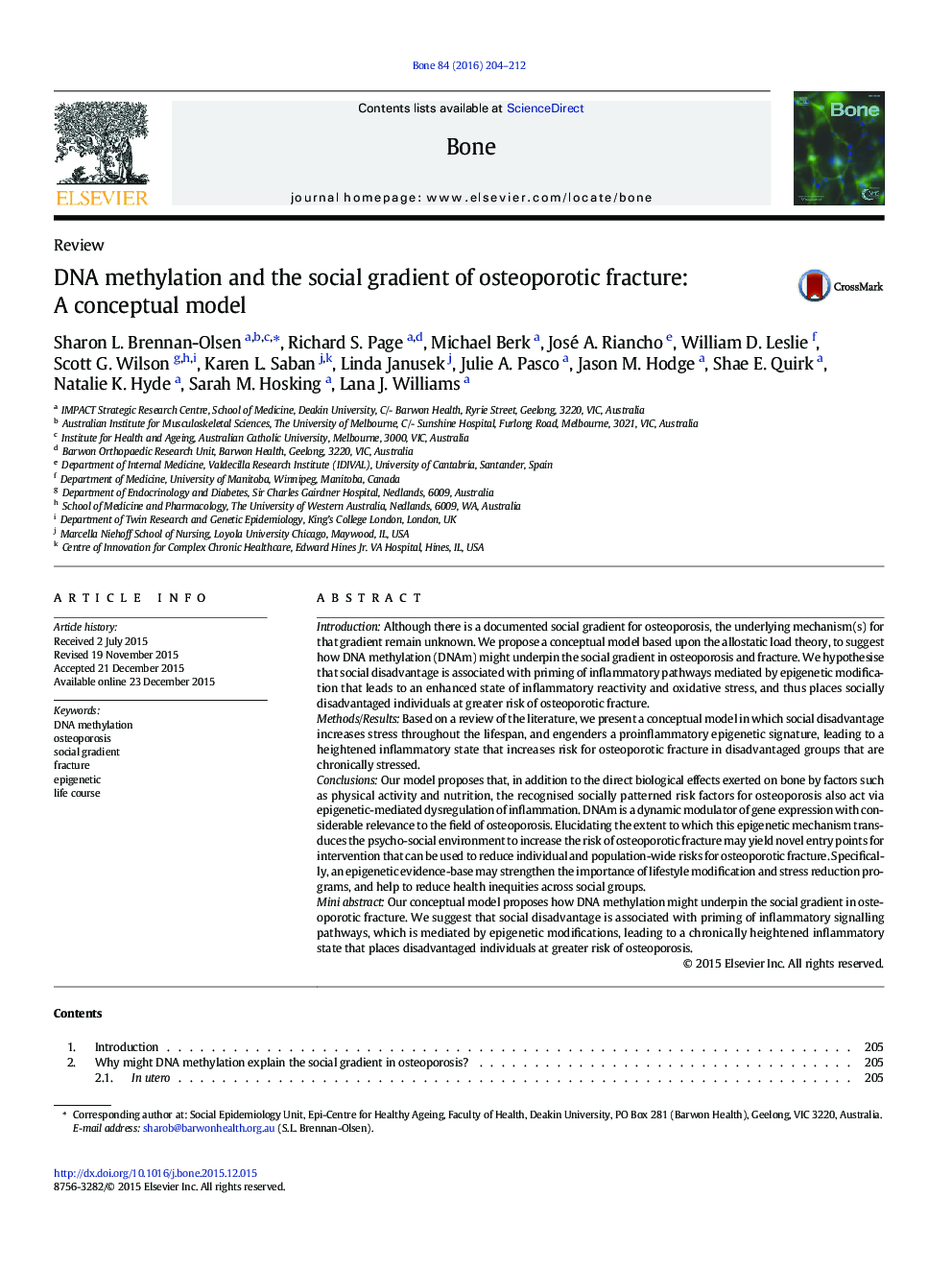| Article ID | Journal | Published Year | Pages | File Type |
|---|---|---|---|---|
| 5889408 | Bone | 2016 | 9 Pages |
â¢Social disadvantage increases stress across lifespan and influences inflammationâ¢Heightened inflammatory state increases osteoporotic fracture riskâ¢Clinical utility of model may include addressing causative environmental pathwaysâ¢Epigenetic evidence-base may strengthen the importance of lifestyle modification
IntroductionAlthough there is a documented social gradient for osteoporosis, the underlying mechanism(s) for that gradient remain unknown. We propose a conceptual model based upon the allostatic load theory, to suggest how DNA methylation (DNAm) might underpin the social gradient in osteoporosis and fracture. We hypothesise that social disadvantage is associated with priming of inflammatory pathways mediated by epigenetic modification that leads to an enhanced state of inflammatory reactivity and oxidative stress, and thus places socially disadvantaged individuals at greater risk of osteoporotic fracture.Methods/ResultsBased on a review of the literature, we present a conceptual model in which social disadvantage increases stress throughout the lifespan, and engenders a proinflammatory epigenetic signature, leading to a heightened inflammatory state that increases risk for osteoporotic fracture in disadvantaged groups that are chronically stressed.ConclusionsOur model proposes that, in addition to the direct biological effects exerted on bone by factors such as physical activity and nutrition, the recognised socially patterned risk factors for osteoporosis also act via epigenetic-mediated dysregulation of inflammation. DNAm is a dynamic modulator of gene expression with considerable relevance to the field of osteoporosis. Elucidating the extent to which this epigenetic mechanism transduces the psycho-social environment to increase the risk of osteoporotic fracture may yield novel entry points for intervention that can be used to reduce individual and population-wide risks for osteoporotic fracture. Specifically, an epigenetic evidence-base may strengthen the importance of lifestyle modification and stress reduction programs, and help to reduce health inequities across social groups.Mini abstractOur conceptual model proposes how DNA methylation might underpin the social gradient in osteoporotic fracture. We suggest that social disadvantage is associated with priming of inflammatory signalling pathways, which is mediated by epigenetic modifications, leading to a chronically heightened inflammatory state that places disadvantaged individuals at greater risk of osteoporosis.
